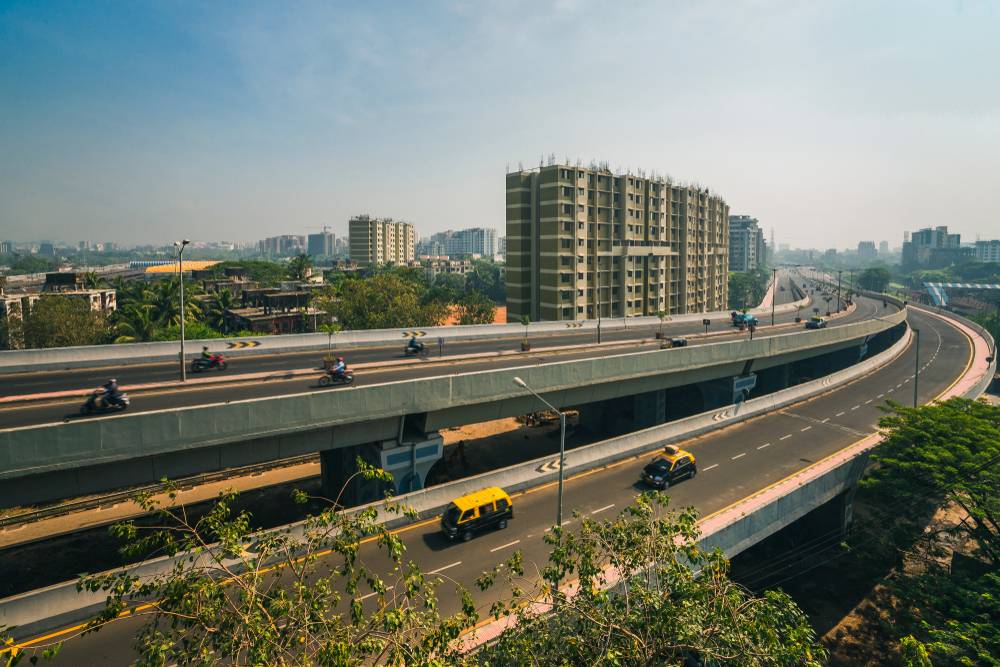 Last updated: July 20th, 2019 2:00 AM
Last updated: July 20th, 2019 2:00 AM
Delhi Mumbai Industrial Corridor
The Delhi-Mumbai Industrial Corridor (DMIC) is one of the world’s largest infrastructure projects, and India’s most ambitious. With an estimated investment of US$90 billion, supported with financial and technical aids from Japan, the high-tech industrial zone is spread across six states, covering an overall length of 1483 KMs between India’s national and financial capital. It incorporates Nine Mega Industrial zones, high-speed freight line; three ports and six airports; a six-line intersection-free expressway connecting Mumbai and Delhi; and a 4000 MW power plant. Several industrial estates and clusters, industrial hubs, with top-of-the-line infrastructure would be developed along this corridor to attract more foreign investment.Objective
The project has been launched with the object of expanding India’s manufacturing and services base and developing DMC as a Global Manufacturing and Trading Hub. It is expected to boost the nation’s planned urbanization, with manufacturing as the key driving force. Apart from new industrial cities, the programme seeks to develop infrastructural linkages such as power plants, water supply, transportation and logistics facilities as well as softer interventions like skill development programmes for employing the local populace.Industrial Corridors and its Benefit
Industrial Corridors recognize the interdependence of various sectors and offers effective integration between industry and infrastructure, leading to overall economic and social development. It brings with-it world-class infrastructure such as high-speed transportation, (rail, road), network, ports with state-of-the-art cargo handling equipment, modern airports, special economic zones/industrial areas, logistic parks/transhipment hubs, knowledge parks focused on feeding industrial needs etc. It provides opportunities for private sector investment in the provision of various infrastructure projects connected with the exploitation of industrial opportunity. Besides the development of infrastructure, the platform renders long term advantages to business and industry in terms of smooth access to the industrial production units, decreased transportation and communication costs, improved delivery time and reduced inventory cost. Therefore, industrial corridors are meant for developing a sound industrial base, served by world-class competitive infrastructure as a prerequisite for attracting investments into export-oriented industries and manufacturing.Vision
DMIC works with the vision of creating a strong economic base which is competitive across the world, in addition to state-of-the-art infrastructure to activate local commerce, enhance foreign investments and achieve the object of sustainable development. Its growth and development goals include stable regulations, well-developed communications, efficient transportation systems and pro-business environment. As already stated, the Corridor is to be conceived as a Model Industrial Corridor of international standards, which seeks to expand the manufacturing and services base and develop DMIC as the Global Manufacturing and Trading Hub, infusing global technological advancements to the grass-root level of local production sources and upgrading skills of influencing region and the country. The underlying philosophy of the project is to create a competitive economy, enhance regional/urban-rural connectivity, integrate inherent strengths of existing resources, upgrade human skills, gain technological advancements, increase the scope of local trade and commerce base of the country and ensure attractive investment climate.Goals
The following five-year goals have been set for meeting the scheme’s objectives:- Double the scope of employment in five years.
- Triple the industrial output in five years.
- Quadruple exports from the region in five years.
Creation of Special Investment Nodes
The creation of 24 investment hubs is under the Government’s agenda, the likes of which would be involved in facilitating businesses and setting up factories without any hiccups in land acquisition and resources, and providing a cheap, fast, and efficient transportation to ports and the rest of the country.Popular Post

In the digital age, the convenience of accessing important documents online has become a necessity...

The Atalji Janasnehi Kendra Project that has been launched by the Government of Karnataka...

The Indian Divorce Act governs divorce among the Christian couples in India. Divorce...

When an individual has more than a single PAN card, it may lead to that person being heavily penalised, or worse,...

Employees Provident Fund (PF) is social security and savings scheme for employee in India. Employers engaged...


